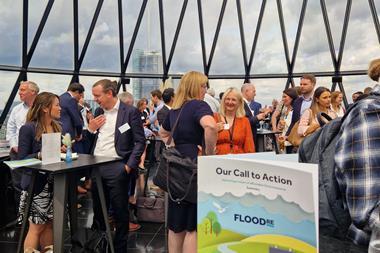’With repeated very hot summers, we are seeing a rise in subsidence cases,’ says general insurance leader
Sustained heat, floods and heavy rainfall could see subsidence insurance payouts increase to £1.9bn by 2030, according to a new analysis by PwC.

In a statement released today (11 July 2023), the professional services firm said that subsidence related insurance will be significantly impacted if extreme weather, such as the levels of sustained heat, continue.
It came after the business modelled the insurance impact on increased weather related losses under the high end of the range of future pathways (Shared SocioeconomicPathways 5-8.5).
PwC said the findings reflected the impact record temperatures can have on insurance claims, with a global increase in unusually hot summers.
Mohammad Khan, general insurance leader at PwC UK, said: “With repeated very hot summers, we are seeing a rise in subsidence cases.
“Given the already dry soil and further hosepipe bans, we could see a significant spike in subsidence, which causes the ground beneath a building to sink and potentially pulling the foundations down with it.
“We are also seeing other property damage claims related to fires starting in nearby open areas that then spread to homeowners’ gardens and result in fence, garage and decking fires.
“Extreme weather events like this can result in some insurers taking drastic action, such as exploring the risk/cost benefit of giving cover in certain circumstances.”
’Unaffordable’
PwC also revealed that extreme winter weather from 2019 to 2020 saw economic losses of £333m due to flooding.
Read: Brokers lack urgency and interest in net zero transition – Ecclesiastical Insurance
Read: RSA Insurance partners with charity to help reduce flood risk
Explore more sustainability content here or discover other news stories here
However, the research showed that this figure could soar to £500m in 2050, assuming that flood-management approaches and expenditure remain unchanged.
Khan said cover for some risks could become “unaffordable or simply unavailable for home-owners in the worst affected areas”.
“It’s clear that ongoing impact on climate change will significantly shape how the sector will choose to manage and absorb risks,” he added.
“Our new modelling proves that potential costs could be the deciding factor as to whether a household receives vital cover or not.
“Scenario modelling is an important step towards understanding climate change losses and managing its impacts on the future cost and availability of insurance and should be seen as more than a reporting exercise.”












































No comments yet